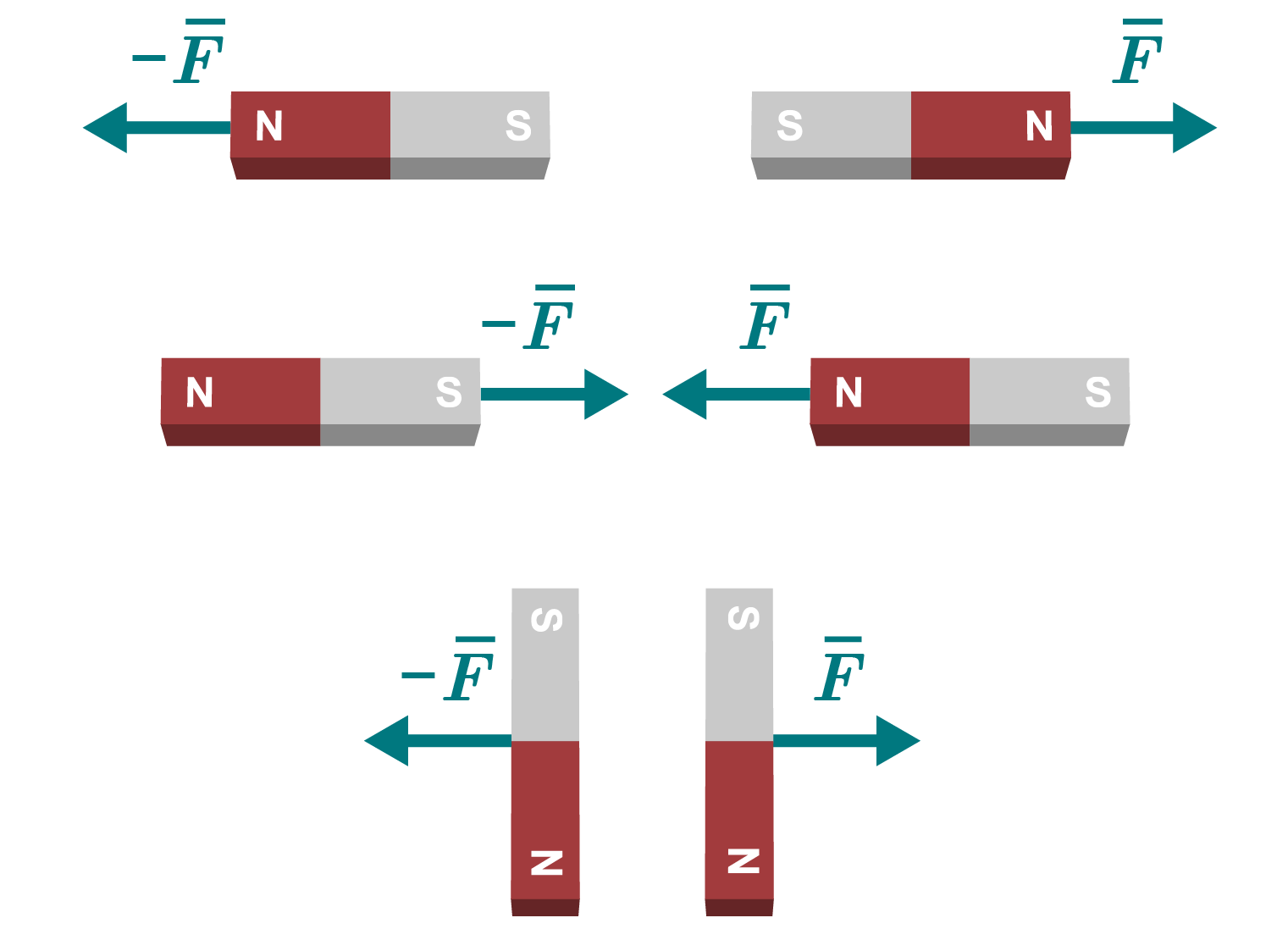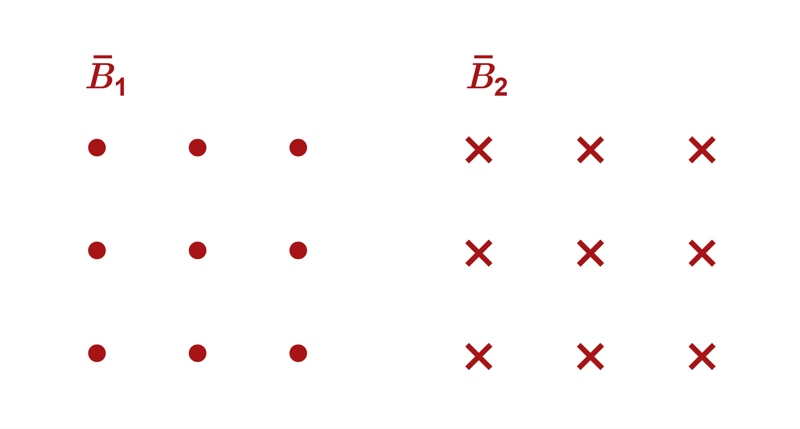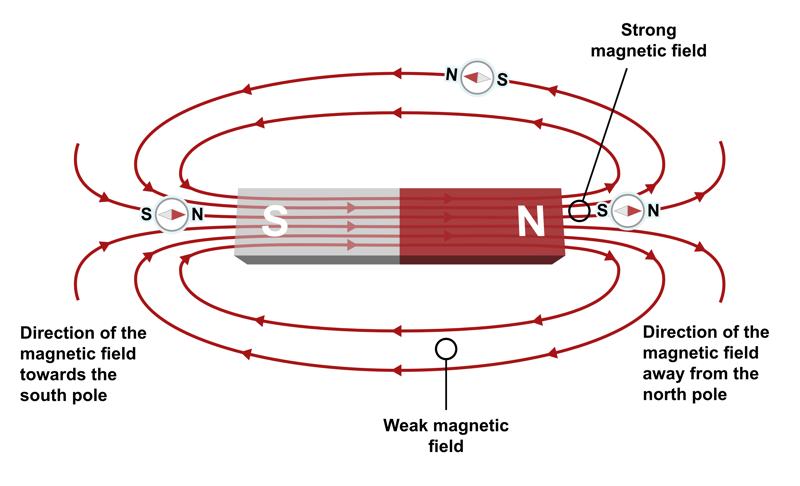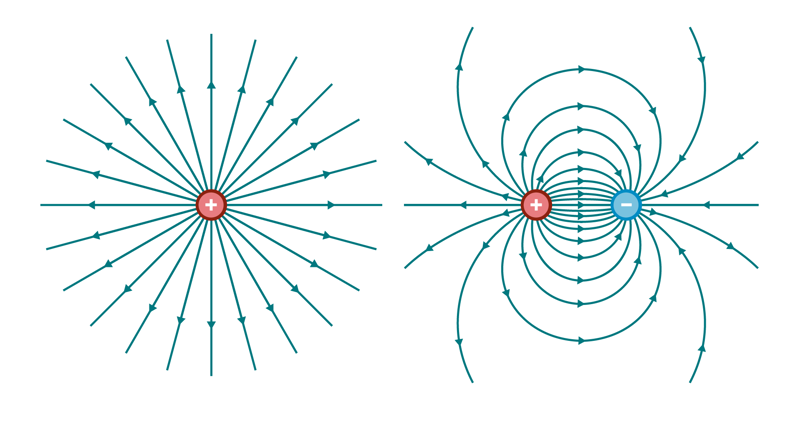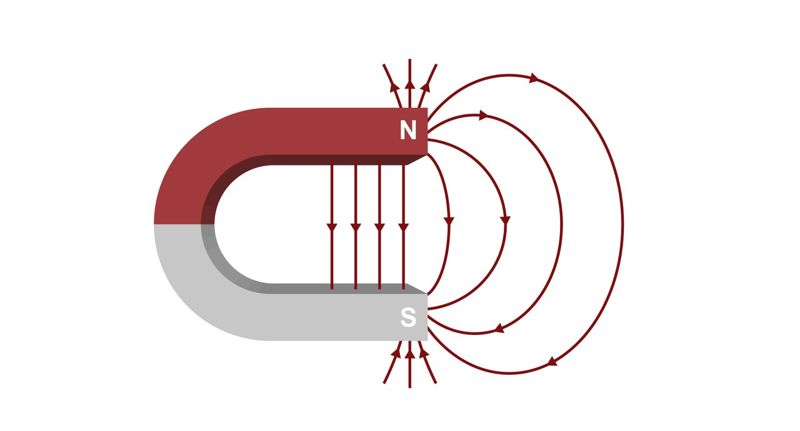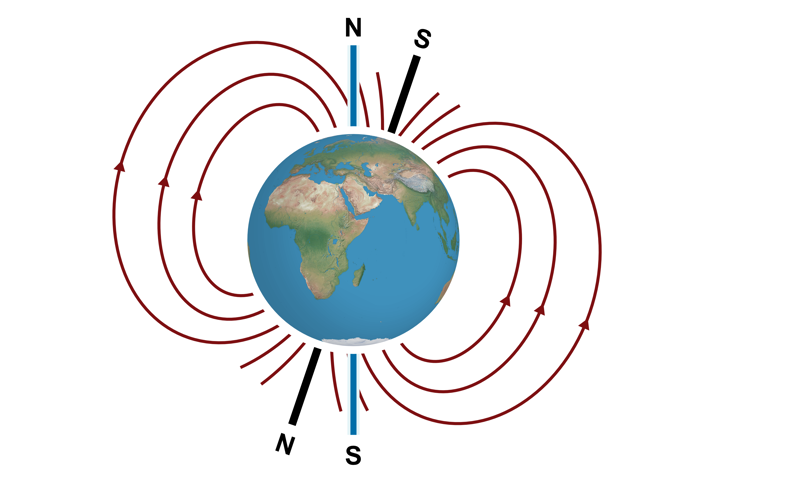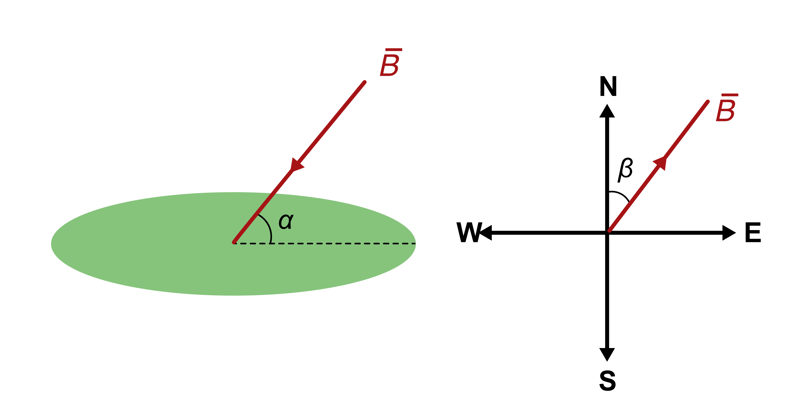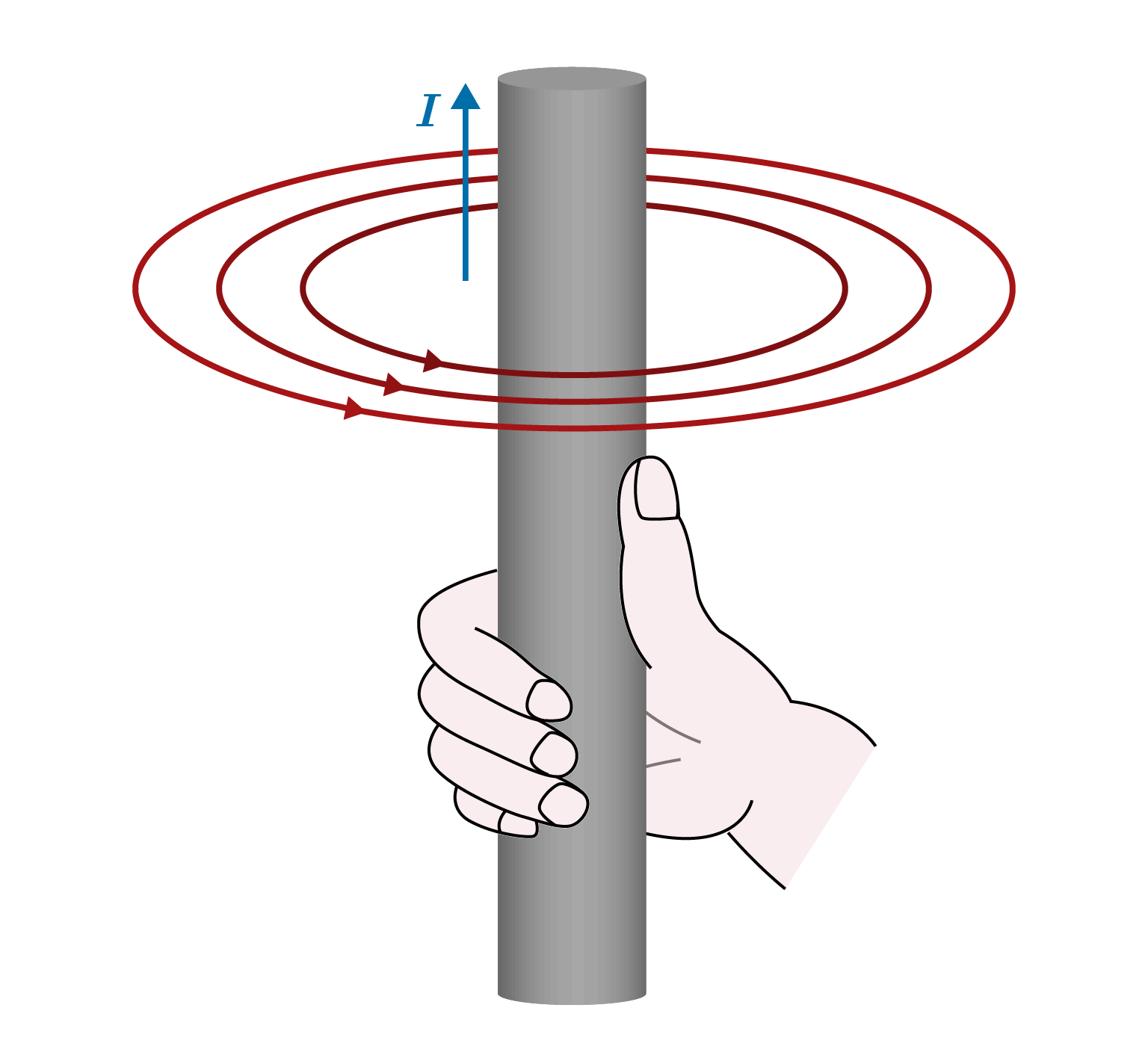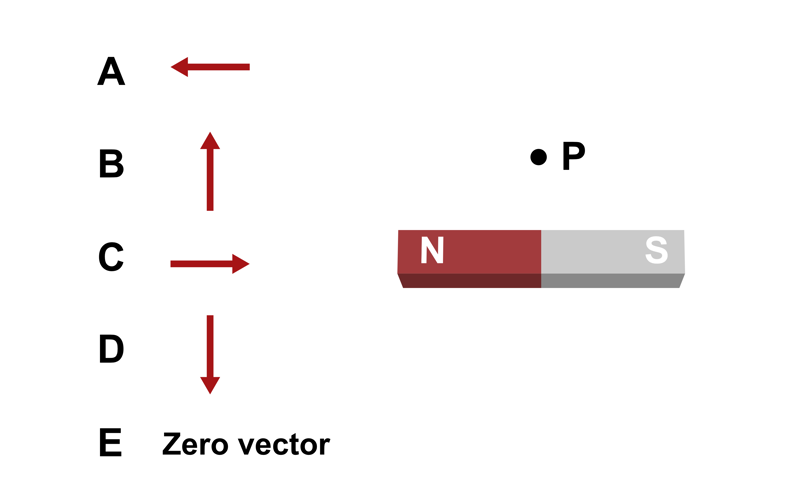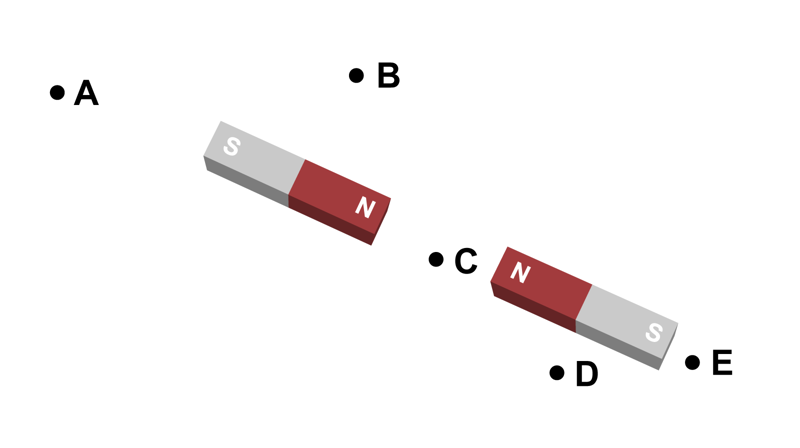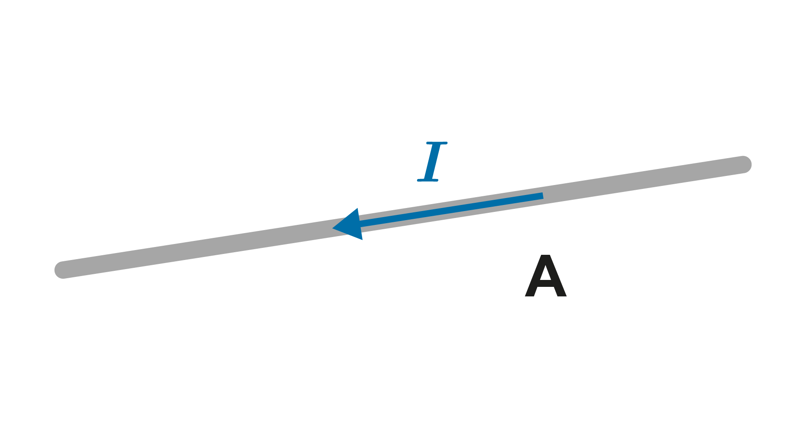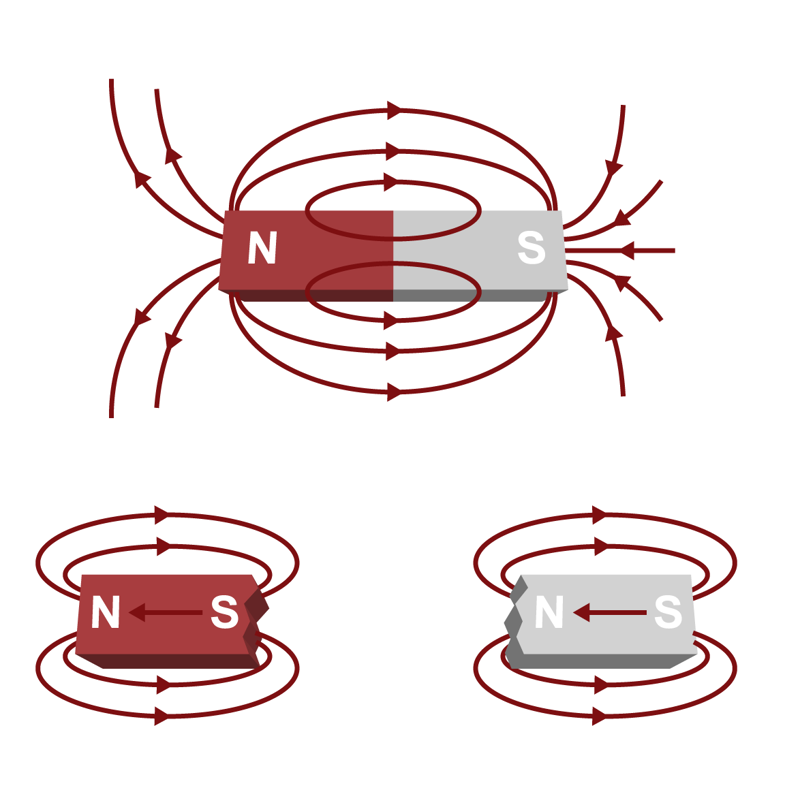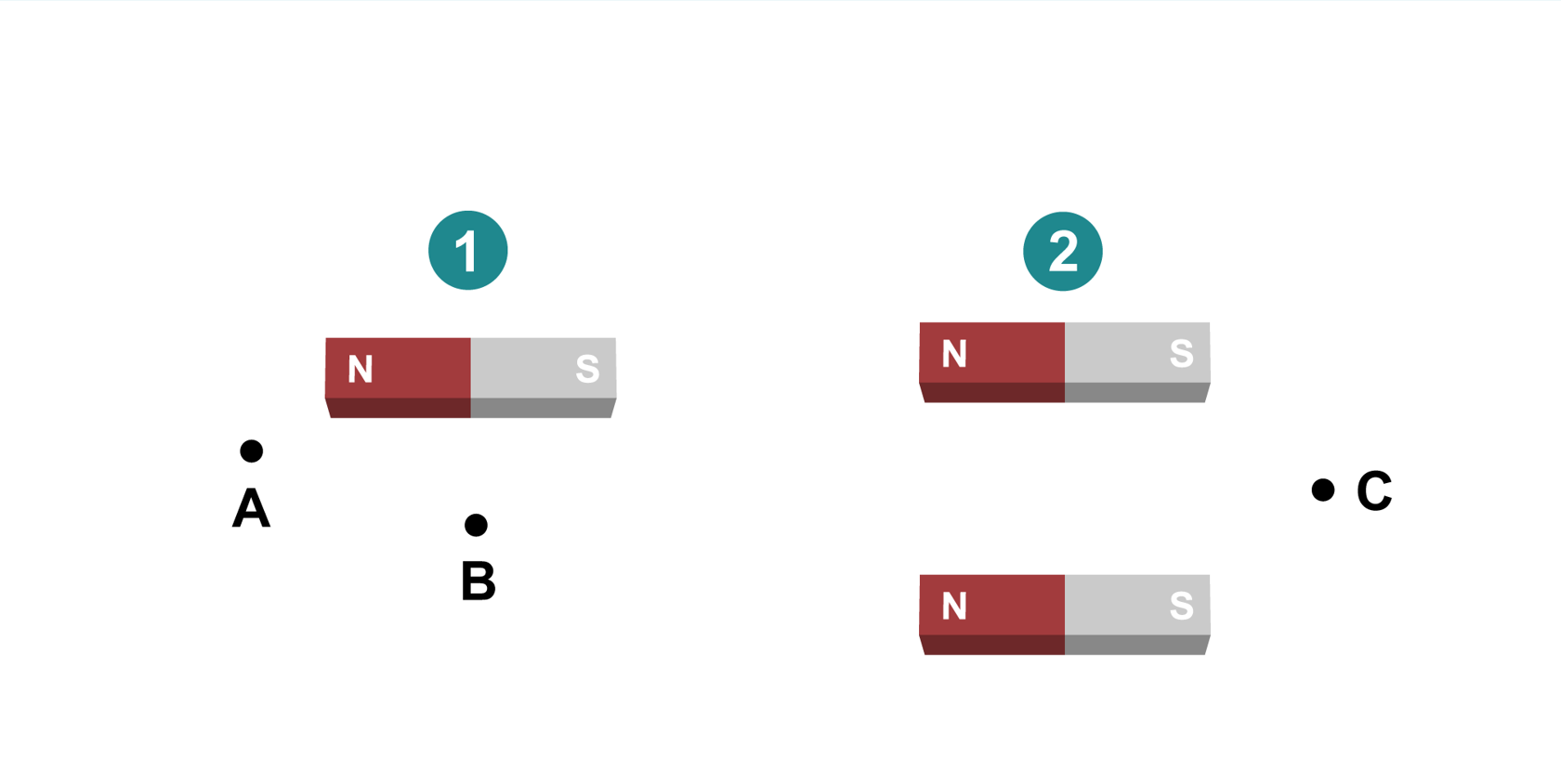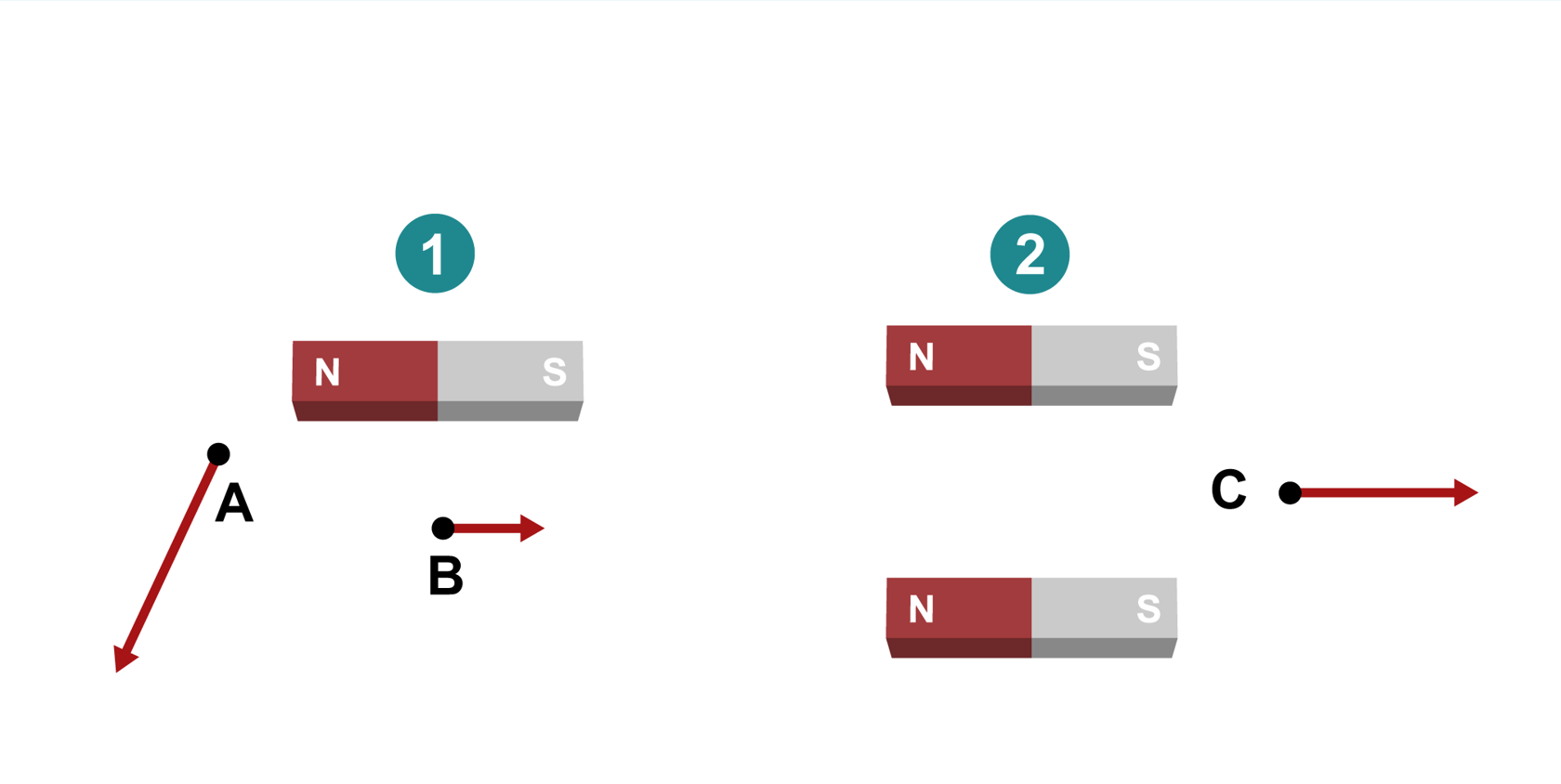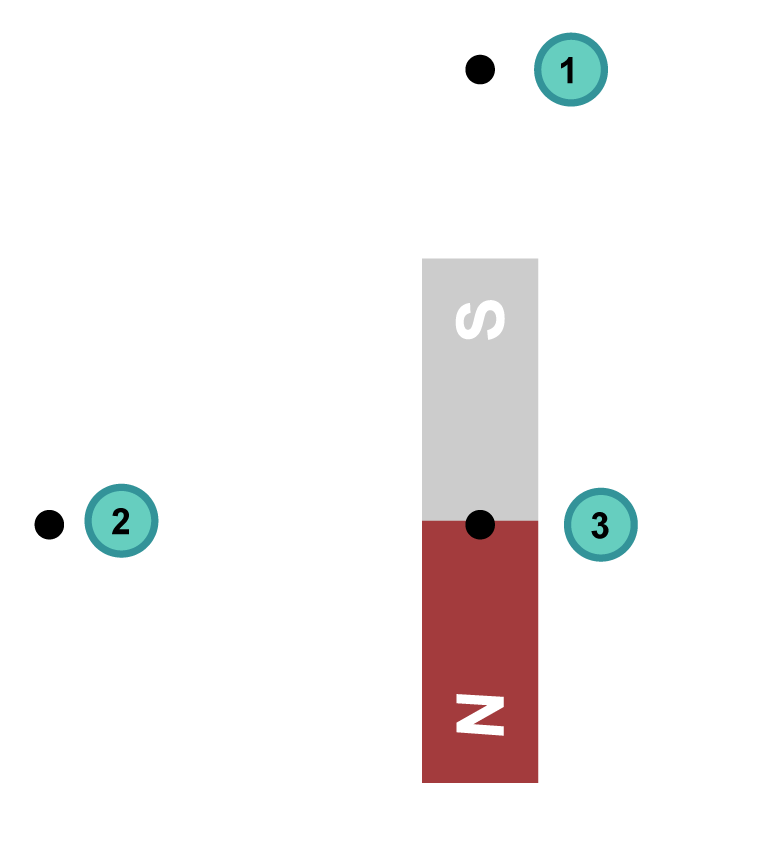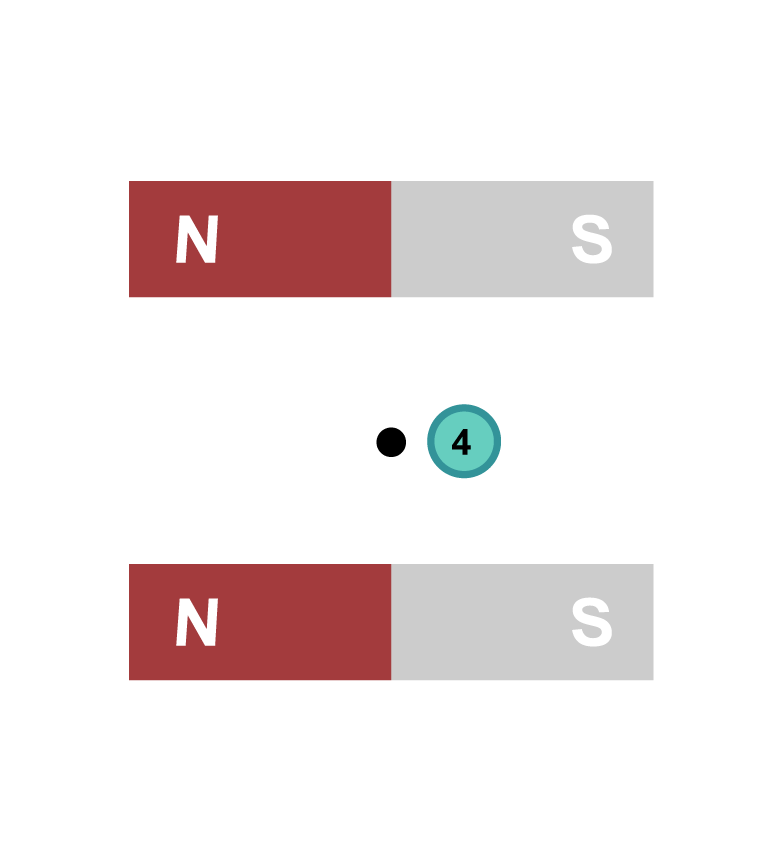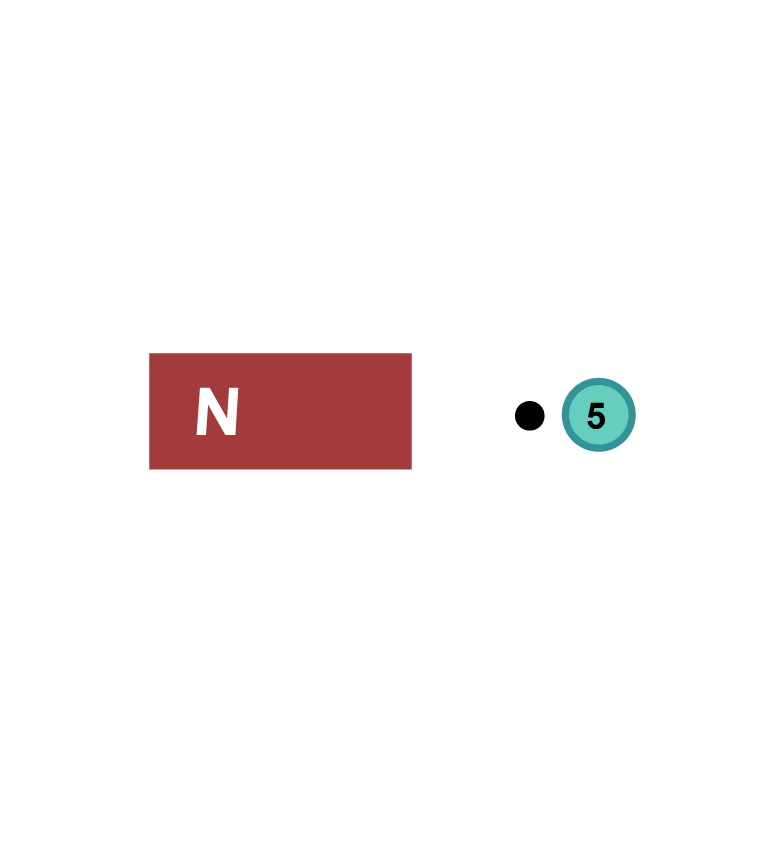The strength of a magnetic field is represented by the quantity magnetic flux density. Its symbol is and its unit is the tesla (T). Magnetic flux density has a direction, making it a vector quantity.
In the context of magnetic interactions, vector quantities are often represented in three dimensions. For example, magnetic flux density is depicted using symbols that indicate its direction either coming out of the drawing (⋅, dot) or going into the drawing (×, cross). Similar symbols can also be used for other vector quantities. In the image, the magnetic field on the left points out of the plane, while the magnetic field on the right points into the plane. The magnetic fields are homogeneous, as the dots and crosses are spaced evenly from one another.
Iron is an example of a ferromagnetic material. In addition to iron, ferromagnetic materials include cobalt, nickel, and a few of their alloys and compounds. Ferromagnetic materials strengthen an external magnetic field and become strongly magnetised. The magnets we are familiar with from everyday life are made of ferromagnetic materials. In contrast, the magnetisation of paramagnetic or diamagnetic materials is significantly weaker. Paramagnetic materials slightly enhance the external magnetic field, creating a weak attractive interaction. Diamagnetic materials weaken the magnetic field, and the interaction is repulsive.
